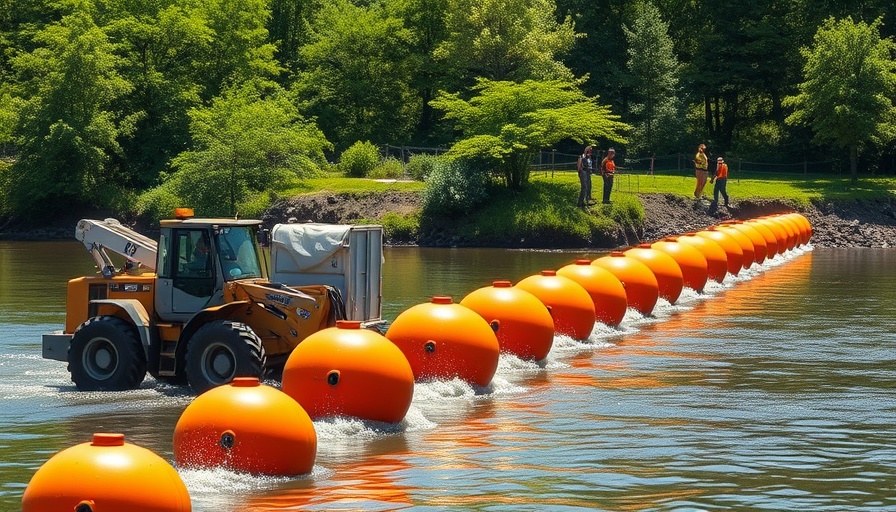
DHS Takes Bold Steps with New 17-Mile Water Barrier
The Department of Homeland Security (DHS) has announced plans to construct a significant 17-mile water barrier along the Rio Grande in Cameron County, Texas—a move that exemplifies the ongoing transformation of border security measures. This decision reflects the complexities surrounding immigration laws and border management within the United States.
Understanding the Motivations Behind the Water Barrier
With dwindling support for traditional border security measures, the current administration aims to address growing concerns regarding unauthorized crossings and cartel activities transpiring across the border. Advocates for the water barrier, including Homeland Security Secretary Kristi Noem, argue that the construction is vital for maintaining safety and deterring illegal immigration. Moreover, bypassing conflicting laws through a signed waiver empowers the department to expedite the project, communicating the government's commitment to fortified border protection.
A History of Water Barriers: What Preceded This Initiative?
This move isn’t entirely unprecedented. In June 2023, Texas launched Operation Lone Star, deploying a shorter series of linked, concrete-anchored buoys between Eagle Pass, Texas, and Piedras Negras, Coahuila. Although these buoys extended for only about 1,200 feet, they ignited heated disputes between state officials and the Biden administration regarding their efficacy and legality. These earlier initiatives paved the way for the current 17-mile project, suggesting that ongoing tensions over border security remain a significant national issue.
Diverse Perspectives on Border Security Strategies
In the discourse surrounding this project, there are contrasting viewpoints regarding the effectiveness of physical barriers in curbing illegal immigration. Critics argue that while barriers may provide a temporary deterrent, they fail to address the root causes of migration, such as violence, poverty, and political instability in home countries. Furthermore, environmentalists have voiced concerns regarding the potential ecological impact of constructing barriers in sensitive ecosystems along the Rio Grande.
The Impacts of Border Security Policies on Communities
As these changes unfold, local communities brace themselves for the implications of intensified border enforcement. Residents of Cameron County are caught between the narratives of safety and the economic ramifications that may arise from stricter border controls. Some express concern over how these measures can affect cross-border trade and familial ties that span the U.S.-Mexico border. This complex interplay reveals that border security policies do not operate in a vacuum; they influence numerous aspects of life in border towns.
Looking Ahead: Future Trends in Border Security
As the DHS forges ahead with building the 17-mile barrier, it raises essential questions about future trends in immigration policy and enforcement. What impact will this have on U.S.-Mexico relations? Will this bolster or diminish support for similar barriers nationwide? The answers to these questions will shape the landscape for years to come. Alternative strategies such as comprehensive immigration reform and investment in regional stability must be considered to approach the issue more holistically.
As this story develops, community members and stakeholders will undoubtedly take an interest in how these measures align with their own realities and lived experiences. The ongoing dialogue surrounding border security will need to navigate not only safety concerns but also respect the dynamics of life along the Texas-Mexico border.
 Add Element
Add Element  Add Row
Add Row 



 Add Row
Add Row  Add
Add 


Write A Comment